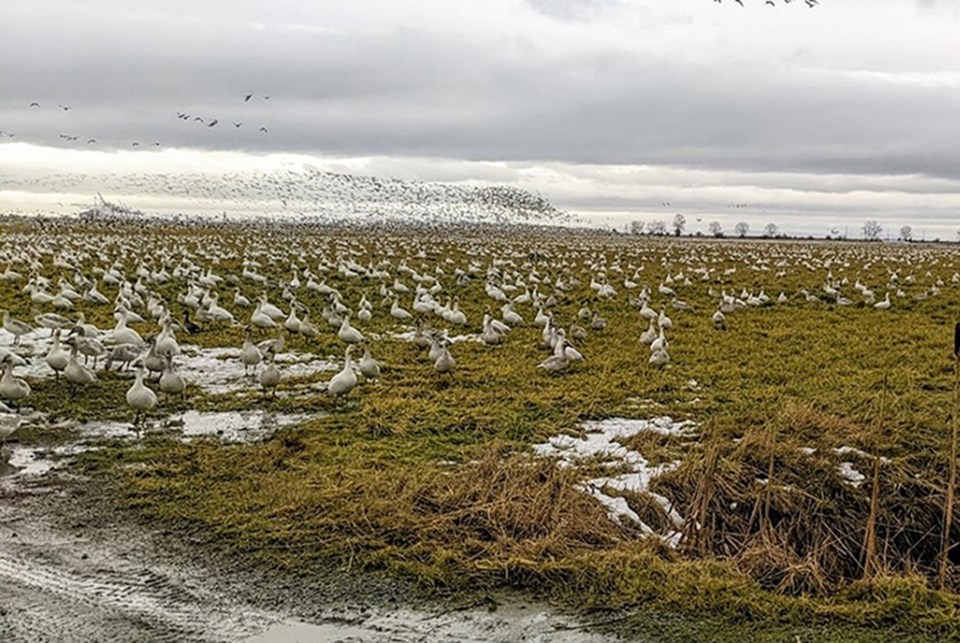The Delta Farmland and Wildlife Trust is getting another $50,000 to continue its good work of saving farmland while also conserving wildlife habitat, following council approval on Tuesday.
The funding allows the trust to help farmers with the costs of wildlife habitat conservation and enhancement.
In previous years, the City of Delta contributed $15,000 yearly to help establish winter foraging areas for waterfowl, but in 2019, council approved a four-year funding program of $50,000 a year with 2022 being the final year.
For the 2022/23 program year, the $50,000, combined with other funding, will allow the planting of 3,500 acres of cover crops and grasslands for winter fields.
As well, between 375 to 675 acres of grass forage fields will be improved.
“This will provide substantial winter feeding habitat for waterfowl and mitigate damage to perennial forage fields,” said a report by the Wildlife Trust.
Coun. Alicia Guichon supported the funding the city is providing.
“The trust is doing really important work for conservation efforts and in tandem with the farming community, it is growing,” said Guichon.
“They’re a tremendous organization,” added Coun. Dylan Kruger.
Kruger said he helped out at this year’s Day at the Farm at Westham Island Herb Farm put on by the trust and was told the event drew more than 5,000 visitors this year.
He said about half were local residents and the other half were from outside Delta. The event had been cancelled for the previous two years because of COVID-19.
The group does a good job of education by balancing the importance of sustainable agriculture and environmental protection, talking about the Pacific flyway and migratory birds, he added.
Last year, the money supported a grassland stewardship program, a winter cover crop program and a forage enhancement program as well as monitoring and evaluation.
Together with other funding, last year’s projects included the planting of 173 hectares of grassland and planting of 1,554 ha of winter cover crops, to protect the soil from intense winter rains, and planting of 234 ha of forage enhancement lands.

